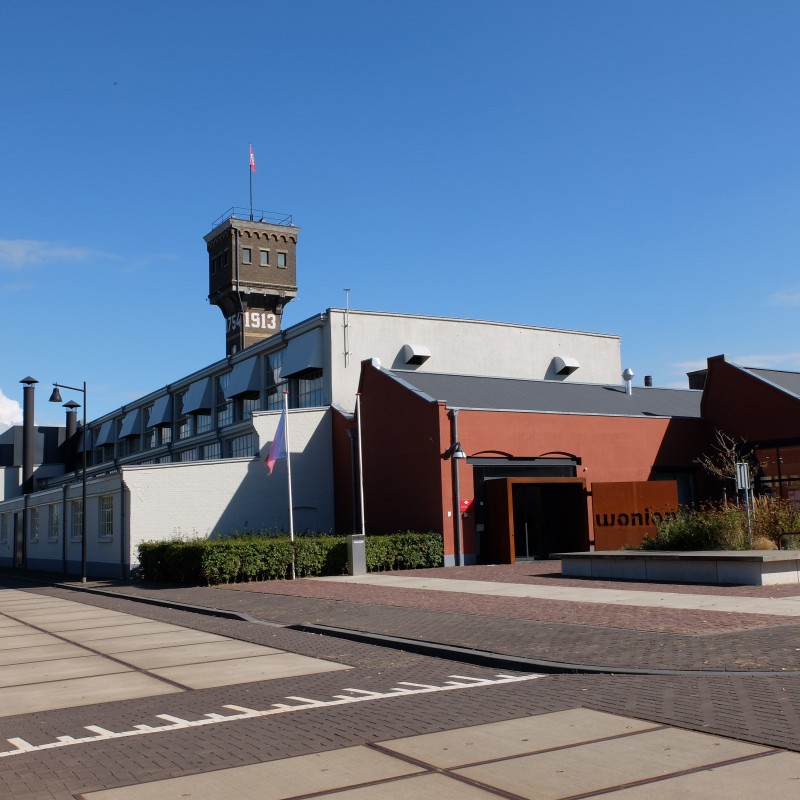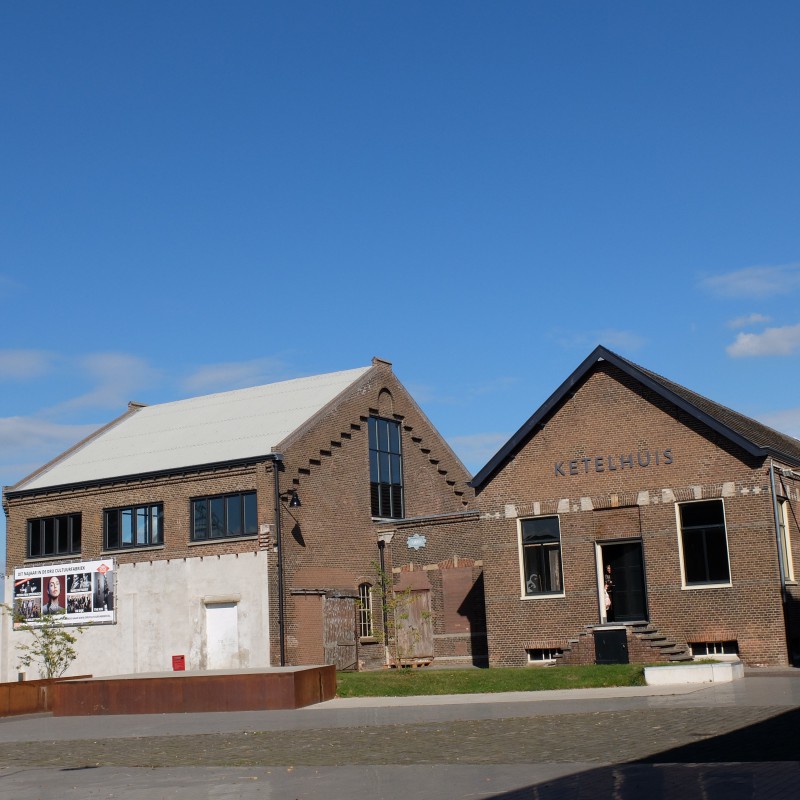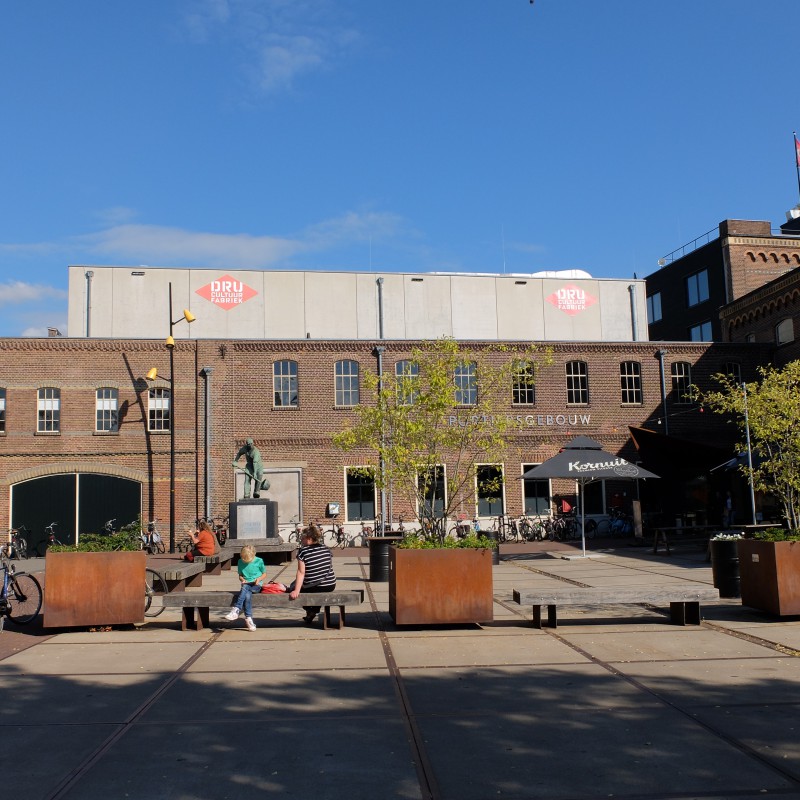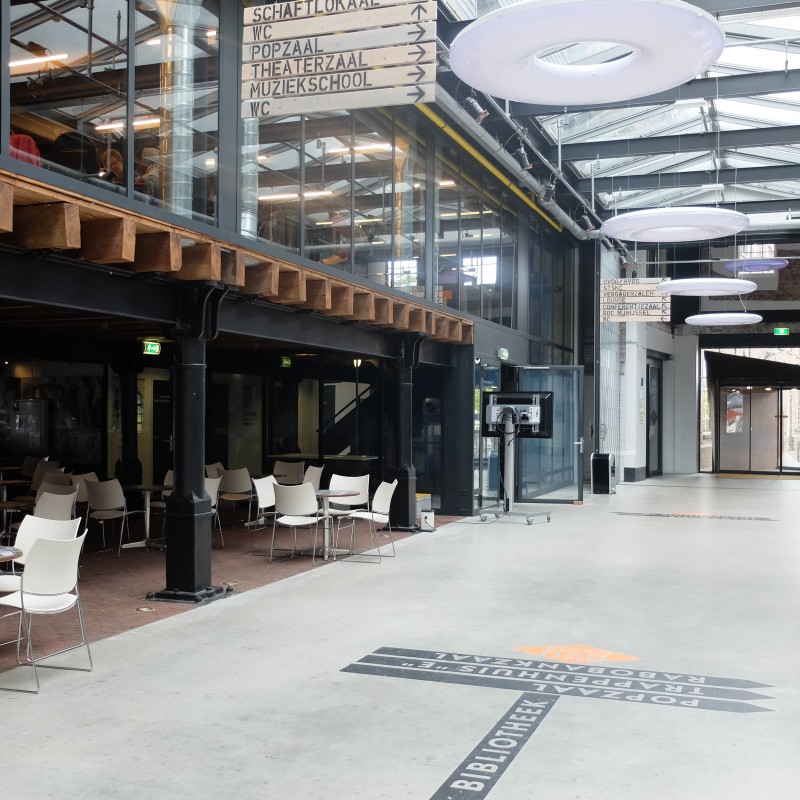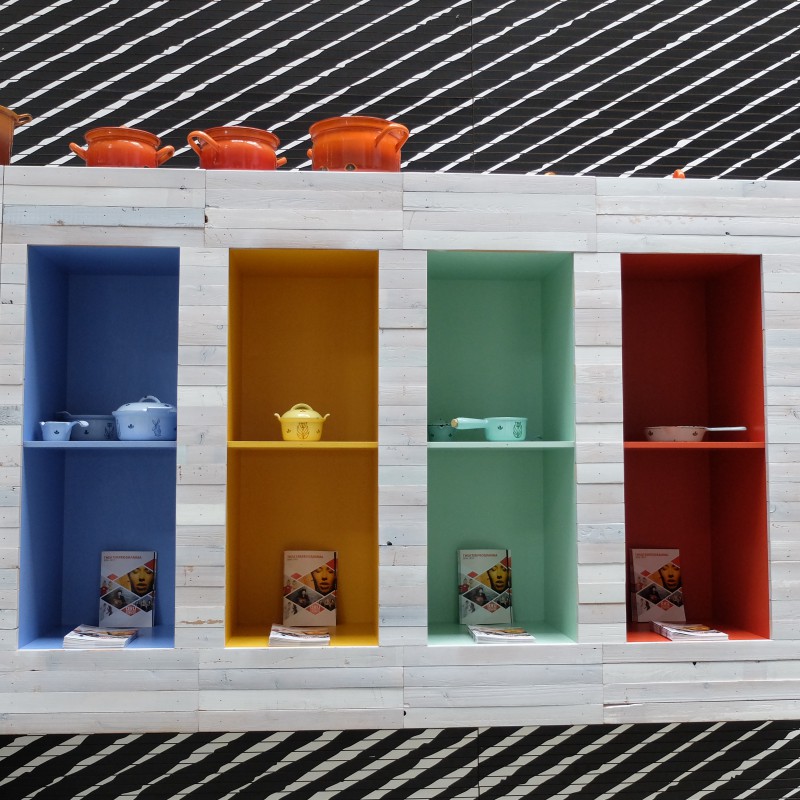DRU Industriepark
Hutteweg 24 7071 BV Ulft, Netherlands
| Former Use: | Ironworks | 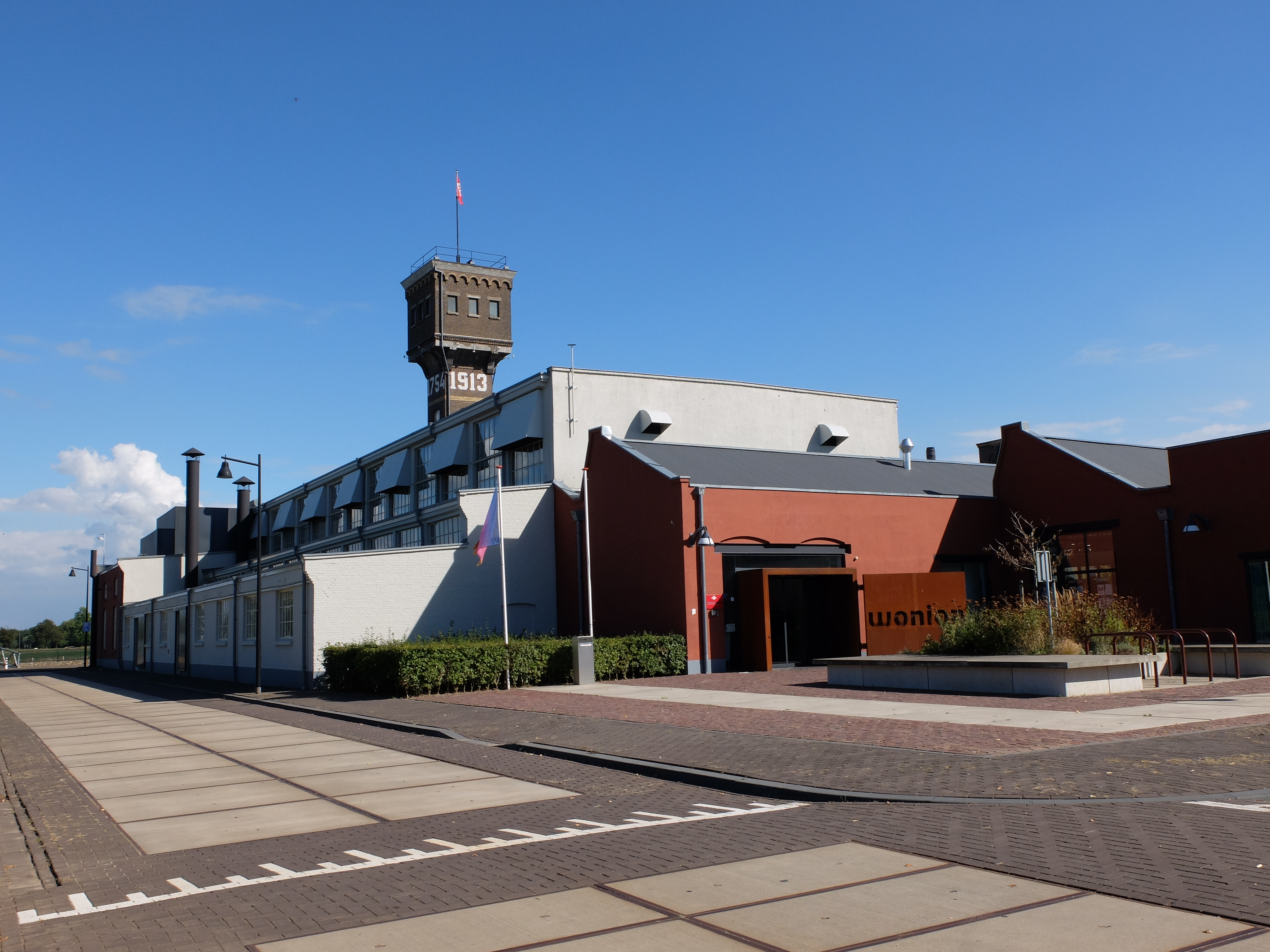 |
| New Use: | Residential, cultural, expo centre, library, meeting rooms, café, ICER innovation centre | |
| Category: | Culture, Education, HoReCa, Industrial Museum, Office, Recreation, Residential, Other | |
| Website: | http://www.dru-industriepark.nl/ | |
| Original Architect: | Gerrit & Arend Beltman | |
| Reuse Architect: | Clevis-Kleinjans Architecten | |
| Construction year(s): | 1754 - 1962 | |
| Reuse year(s): | 2009 - 2014 |
Description:
Historic use
DRU is one of the few surviving remnants of the iron industrial landscape that blossomed from the 18th until the 20th century in the Achterhoek area on the east border of the Netherlands. The complex was developed in an organic way, starting in 1754 from a water powered blast furnace. The majority of the existing buildings dates to c. 1900, with the exception of the Portiersgebow, built in phases from 1850 and the SSP-hall, built during the last expansion of the complex in 1963. An analytical description of each building’s former and current use is available on the website of DRU Industriepark. (DRU Industriepark)
Most of the buildings were designed by the architects Gerrit and Arend Beltman who were renowned for their extensive industrial buildings’ portfolio (Hummelen and Stenvert, 2011, 19-26). The organic development of the complex resulted in the lack of a unique architectural stylistic image of the factory . In other words, each building has its own architectural, spatial and structural language, incorporating the latest existing advances of material technology and being influenced by contemporary architectural concepts.(Nationale Agenda Herbestemming, 2015) The Portiersgebouw and the Beltmans complex are of particular interest as they combine architectural styles and make use of different material and structural technologies.
The production of the factory was also subject to change, in a quest to accommodate the shifting demand of the society during its 250 years of operation. Early products included cast iron fireplace firebacks, cannonballs, pots and basic heaters. The 19th and 20th century saw the enrichment of the production with new products such as bathtubs, enamel, sheet metal, machinery parts, car parts and gas heaters.(DRU, 2016)
The withering of the DRU factory in Ulft started in the 1970s and was intensified in the 1980s, resulting in the abandonment of the complex in the turn of the 21st century. The DRU company was relocated in Duiven and it is still operational, focusing on gas heating appliances.(DRU, 2016, Bayer et al., 2015, 144)
Reuse Preparation
The decision for the factory’s transformation did not happen within a vacuum. It can be seen as the result of a series of initiatives taken by members of the local community and the local authority. In specific, since 1989 the local historic association campaigned to create awareness over the historic significance of DRU. By 1996, they were the first non-industrial party to move in one of the factory’s disused spaces. The idea for the creation of an iron museum and the struggle for its realisation can also be ascribed to the same group.(Het Nederlands IJzermuseum, 2008)
The efforts of the posed group were joined by the decisive endeavours of John Haverdil, a local politician with a strong interest in industrial heritage. Haverdil became the ambassador of DRU’s potential transformation and lobbied on a local and provincial level for the transformation of the complex.
It is worth mentioning that the aforementioned efforts came at a time when industrial heritage was gaining momentum in the Netherlands. The year of industrial heritage held in 1996, gave a big boost to such initiatives. The DRU became known, featuring in important publications (Nijhof, 1996, 25) and through a Teleac TV series episode. (Het Nederlands IJzermuseum, 2008)
The strong social underpinning of the historic importance of DRU, expressed by the described ventures, prevented the initial plans for its demolition. The local City Council (C.C.) that was initially against DRU’s preservation, was forced to recant their position and look for alternative future uses. These early discussions were joined by the divided local community as well as important future players like Haverdil and the housing association Pares (now Wonion). After the relocation of the last industrial activity from DRU in 2003 the C.C. purchased the premises. Yet, being unexperienced with the redevelopment of such a large and complex terrain, they decided to pass it to BOEi.
Reuse process
The period that followed the change of ownership was tough. DRU’s redevelopment became subject of a heated controversy, with various stakeholders standing by conflicting ideas. The two main matters in dispute were the high budget required for the decontamination and transformation of the site and the selection of its future use. The change of the local authority in 2005 came to relieve this tension.
“The acceleration of the project came with the new City Council, with John Haverdil as an alderman.”, explains van Toor, chairman of ICER.
Haverdil, having secured provincial and European funds, set the process in motion starting the same year with the decontamination of the site. The increased costs, required due to a national change of standards, were covered by an additional provincial grant. The choice of the complex’ future program was finally formed in deliberation with ex-employees, inhabitants and key stakeholders around the safeguarding of the complex’ fabric and its history. Haverdil highlights three main features that played a catalytic role for the program selection:
“We wanted a program that would keep the locals and the people from the region here. We looked for what is missing and what is there yet it is not sufficient or does not work. For example, there was a small theatre but we wanted something bigger and also a music scene…We also wanted a mixed-use scheme with complementary uses. So, if one building goes empty the others will compensate…”
According to Ron Spaan, project leader of BOEi and Haverdil, communication, honesty, good collaboration and the determination to deliver a successful project bridged the stakeholders’ differences, contributing to the formation of a common vision.
It is worth mentioning that during the decision making process, key stakeholders travelled to Ironbridge, England and the Ruhr area, Germany to draw inspiration and gain experience from relevant successful projects.
The transformation of the complex started in 2007 and it was realised in steps, after the demolition of several additions to the listed buildings. The stylistic diversity of the complex and its organic development gave room for a certain freedom in its redesign approach. The architectural team Hurenkamp Architecten & Adviseurs, Velp & Clevis-Kleinjans Architecten, responsible for the conversion of the site in collaboration with the RCE and the owners, treated the listed buildings with respect while transforming them for their future uses. According to this research’ respondents this part of the collaboration was not always smooth.
In respect to the redesign approach, the historic fabric was preserved with attention to the details. The historic finishes and patina were maintained to a large extend and were incorporated in the plans. There is a clear differentiation between the old buildings and the new additions in terms of materials, colour and composition. Moreover, the new features and technical installations match the industrial character of the site. In certain buildings such as the SSP-hall and the afbramerij, there is practically no subdivision in smaller units, preserving the grandeur of the construction’s original spatial dimensions. (NRP Gulden Feniks, 2011) The plates of oxidised iron used for marking the entrances of several buildings and for forming outdoor fittings, provide a common expression to the intervention while serving as a reference to the historic raw material of DRU.
Besides the demolition of several unlisted buildings, prominent elements compromised in favour of the future uses’ needs were the shed roofs in the Beltmans complex and the badkuipenfabriek. Nevertheless, the retained parts of the roof structure and the patina in the side walls insinuate the buildings’ former form. Other compromises involve the loss of the machinery with a few exceptions and the subdivision of the buildings which were converted into residential units. An element that deviates from the described philosophy of the conversion is the 35 meter chimney moved in the terrain from the VIKA industrial complex in Ede, by a local association (Bayer et al., 2015, 147)
As regards the context of the complex, it is evident that it was carefully redesigned. Between the buildings there is a system of public spaces with different typologies accommodating alternative functions. Furthermore, the conversion of the complex was combined with extensive development of housing units for the compensation of the restoration costs. The posed developments located in some distance on the northern and the southern side of the historic complex and having a relatively small scale, do not impede the vistas to the complex nor overshadow it. The report Gebiedsvisie Dru industriepark - deel 2 (Gemeente Oude IJsselstreek, 2011) describes in detail how the DRU’s redevelopment fits in the plans for the local regeneration of Ulft. It should be noted though that many of these plans have not been realised yet.
In operation
Since its opening, DRU is featuring in a number of publications as a highly successful project and despite being in the Dutch province it is often compared to the Westergasfabriek. The ownership of most of the buildings has been transferred from BOEi back to the local authority. The main exceptions are the Beltman complex that belongs to the housing corporation Wonion and the badkuipenfabriek, most of the units of which, have been sold to its current residents by BOEi.
The first building to be delivered was the Portiersgebouw in 2009. According this research’ respondents this delivery was rushed to precede the local elections. Two years later the transformed Beltman complex and the badkuipenfabriek were opened. The Loongebouw and the SSP-hall were delivered in 2012 and finally the afbramerij opened its doors to the public in 2014. (Gemeente Oude IJsselstreek, 2011). The ketelhuis is the only building which still remains empty, being used only for temporary events.
An important characteristic of the reused complex is its multifunctional character. DRU is combining a rich array of cultural activities with horeca, housing, business space and an innovation centre that includes an industrial museum. Discussing the multifunctionality of DRU Juliëtte Hofman notes:
“We are complementary to each other and have a lot to offer to inhabitants of the town and also to people outside the municipal boundaries. All together we attract about 500.000 visitors to our venue annually.”
A special challenge for DRU is its remote location. The complex is positioned far away from the urban area of Randstad and has a poor accessibility to the nearest cities. This proves to be particularly problematic for the functions that aspire to attract a provincial or national visitor group. Hofman explains:
“We are an event venue of 3000-4000 people. The problem is that events are reluctant to come here and when they cancel they tell us that we are too far away.”
Shifts
The complex’ new life counts only a few years, thus the shifts that have taken place are limited. The two most important ones are the following. First, there is a notable change of perception over the project from the local community. As John Haverdil explains,
“In the beginning the local community liked the project. However when they saw so much money invested in it […] some people turned against it. Nowadays the community has realised what an asset this is for the town and they are proud of it. It is a hotspot of the region, but it took time to get to this point.”
Second, the uncertainty over the project’s financial sustainability has created a tension between the current C.C. and some tenants. Against this backdrop, there is a discussion over a possible shift of ownership.
Relevant Literature:
- "Bayer, M., Bovens, M. & Husslage, B. 2015. Terug naar de fabriek: 25 industriële iconen met nieuwe energie, Amsterdam, Oostenwind
- DRU. 2016. Our history [Online]. Available: <https://www.drufire.com/en-gb/about-dru/our-story >[Accessed 21 November 2016].
- DRU Industriepark. DRU History [Online]. Available: http://www.dru-industriepark.nl/en/dru-industry-park/history/ [Accessed 21 November 2016].
- Gemeente Oude Ijsselstreek 2011. DRU Industriepark. Gebiedsvisie Dru industriepark - deel 2. Van Paasberg tot Engbergen, Gendringen, Gemeente
Oude IJsselstreek. - Het Nederlands Ijzermuseum. 2008. De geschiedenis van het initiatief [Online]. Available: http://www.nederlandsijzermuseum.nl/main/ijzermuseum-in-wording/items/1-de-geschiedenis-van-het-initiatief.html [Accessed 8/12 2016].
- Hummelen, M. & Stenvert, R. 2011. Het Beltmancomplex: Een tweede jeugd, Velp, Drukkerij De Rijn BV.
- Nationale Agenda Herbestemming. 2015. DRU-cultuurfabriek te Ulft [Online]. Available: <http://www.kennisbankherbestemming.nu/projecten/dru-cultuurfabriek-te-ulft >[Accessed 21 November 2016].
- Nijhof, P. 1996. 101 industriële monumenten, Zwolle, Waanders.
- NRP Gulden Feniks. 2011. Voormalig Dru Terrein [Online]. Available: <http://www.nrpguldenfeniks.nl/hall-of-fame/jaargangen/2011/gebiedstransformatie/voormalig-dru-terrein-1/ >[Accessed 8/12 2016]."
